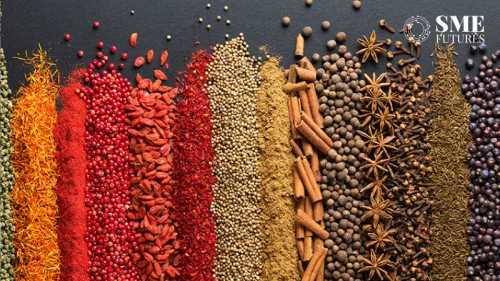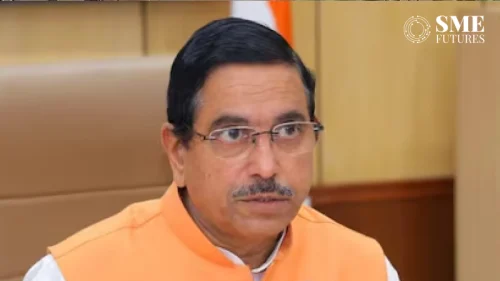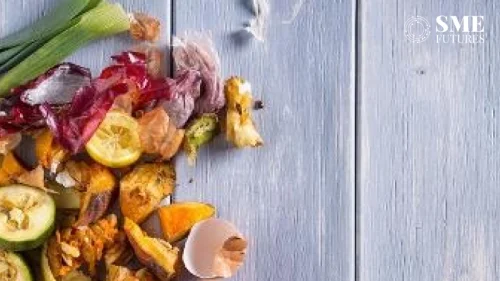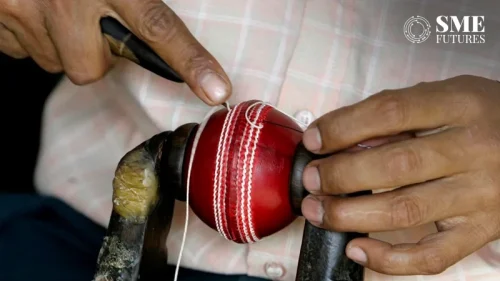Mian Kasam Adham is a second generation artisan of Mocha Aari embroidery from Bhuj in Kutch district of Gujarat. For him, this craft is not just a legacy, it is his passion. Unfortunately, he says, the work he and his family get is not enough for sustenance. When there are no orders, they take up odd jobs at shops to earn Rs 6,000-7,000 a month.
“I enjoy this work a lot, but it’s difficult to survive on this alone. We primarily cater to NRIs and people from Mumbai and Ahmedabad. No one in Bhuj wants our work,” he rues. His three brothers and a sister too are involved in the work.
Adham is not the only artisan staring at a bleak future. Kutch, where most artisans like him are based, has numerous such examples. Almost all of them have inherited the business from their fathers and forefathers. However, with GST and demonetisation eating into their earnings, they are forced to either give up the family legacy or make changes in their work to make it viable.
The rise and fall of Kutch’s fine arts
Pastoralism once flourished in Kutch. It contributed to and shaped craft traditions and related livelihoods. The pastoral communities not only supplied raw materials like wool and leather to the artisans, but also added value to the crafts with unique skills of embroidery, embellishment and dyeing. They played an important role as end user of the craft and defined aesthetics of the products in partnership with artisan communities. For instance, when the Maru Meghvals migrated from Nagar Parkar in Sindh in 1972, they brought with them fine traditional embroideries like Suf and Kharek. (Patrons of that time honoured arts and rooted for a permanent collection of traditional embroideries).
Over time, this symbiotic relationship between artisans and pastoral communities changed. Earlier they relied on barter for produce and raw materials, but today some of their products are required only during special occasions like marriage, child birth, etc. Exchange of materials and goods drastically reduced as each group altered its way of living.
With population growth and increased requirement, artisans found it difficult to scale up production. This forced them to look for other options, leading to disconnect between them and the pastoral communities, economic as well as social.
Before 1960, the Rann of Kutch was an independent state with cultural and communal affinity to the Sindh of Pakistan, unlike the rest of Gujarat. The pastoral Maldhari communities wore blankets weighing almost 3 kg which lasted for nearly 25-30 years. This demand was local so the weavers wove for three-four months in a year. But after 1975, when catering to the urban market increased, they wove all year round. They began using a combination of local wool, merino wool from Ludhiana, Tussar silk, Eri silk, Muga, regional organic cotton and some from the power looms of Ahmedabad.
Many crafts like rope-making, hand-weaving of bags etc are now mere hobbies, rather than a part of routine work due to availability of cheaper goods in the local markets, which in turn cuts into the market for hand-woven items.
Arjun Vilaji Marwada, 36, belongs to the Marwada Meghval community. He is the fourth generation leather artisan from a village in Bhuj district. His family also does embroidery and mudwork to earn a living. Earlier they had enough leather exchanged with the Maldharis to meet their everyday needs. Now it is indirectly brought from Chennai, since processing it through traditional methods is a tedious job. Many natural elements are no longer available.
Shamjibhai Vankar, 43, and his family of Meghwal weavers, live in a village near Bhuj where they have been making woollen shawls, stoles and blankets for generations. Traditionally they used local sheep wool and handspun cotton sourced from Rabari, Patel and Ahir communities – pastoral herders who have also provided them milk and its byproducts. Now they use Acrylic wool yarn sourced from Ludhiana.
In the early 1980s when acrylic yarn came to Kutch, it became popular because it was brighter, cheaper and easier to weave. Only after 1990, the coarse sheep wool came into existence with products like wall panels, throws, runners for homes. With this change in strategy, the traditional spinners got more work and the weavers changed their product line, he elaborates.
“Our women have restarted weaving on the charkha in the house during their free time for past four-five years,” he says.
Despite the tide going against the artisan community, Vankar takes pride in the efforts of his family to keep alive the art of natural dyeing practised by Khatris, the Muslim dyers of Kutch. “For a period of 30 years, lac yarn dyeing had stopped, but owing to the rampant use of acid dyes elsewhere, it was restarted in 2000. My family put in a lot of efforts to revive the art,” says a proud Vankar.
No patronage
Ramji Heerabai Maheshwari, 42, third generation single ikat weaver on the pit loom of his family, rues, “Many people are not aware of single ikat weaving, It has lost its identity, unlike its expensive counterpart Patan Patola which is patronised by the rich and royal.
 Being a cotton product, it looks like a country cousin to the rich silk Patan Patola.” To reduce the price, many switched to machine-made or printed version of the art, he explains. “Only my cousin and our families are left in this business. We make simple designs for the masses as they are unwilling to pay for our hard work or intricate designs. It would be wonderful if we had direct access to better markets to showcase our skills,” he adds.
Being a cotton product, it looks like a country cousin to the rich silk Patan Patola.” To reduce the price, many switched to machine-made or printed version of the art, he explains. “Only my cousin and our families are left in this business. We make simple designs for the masses as they are unwilling to pay for our hard work or intricate designs. It would be wonderful if we had direct access to better markets to showcase our skills,” he adds.
A craftmark seal of authenticity would help them fight competition, they feel.
Life for Anil Maheshwari, a 24-year-old fourth generation Mashroo weaver in Mandvi, isn’t any different. They have introduced chemical dyes and cotton yarn as natural dyeing is extremely tedious and silk is expensive. Power looms have taken over the market. However, he takes pride that even during inflation he sold Mashru, “one of the best handcrafted timeless fashion”. They have made it more relevant for the times with colour fastness, tighter fabric than the others and a completely unique design vocabulary.
The biggest grouse for Maheshwari is that the “middlemen make nearly Rs 300 per metre and give us Rs 150 or even less”. With that money, they must manage four looms on which he and his father, along with two artisans, sit. “Thankfully, mother chips in with bobbin work to reduce our expenses as much as possible,” he adds.
Dealing with challenges
About 12 years ago, it was estimated that the numbers of weavers in Kutch exceeded 2,000. Today, it has reduced to fewer than 1,200. The price of the yarn has nearly doubled in last few years but the selling price of the final product is almost the same. This greatly reduced the wages and profit after accounting for inflation.
The 2001 earthquake changed lives of people in Kutch. Khamir, a craft organisation, started working on preserving the “pride” and building an “identity” for traditional practices of the communities of Kutch. It began with managing natural resources and cultural linkages among different communities.

Juhi Pandey, director of Khamir, says, “Today some weaves are flourishing more than others, but sadly none are being used by the local communities anymore as weavers are busy catering to urban and international markets with their specifications. Weaving is among the most flourishing crafts in the area along with Ajrakh block printing as the younger generation is taking it up as full-fledged vocation. Even in weaving, introduction of the new material, kala kapaas (cotton), has created a boom. However, the carpet and Mashru weavers are still struggling.” The climatic condition in the district is most suitable for cotton, which is its second major crop grown after groundnut.

Mainly grown in Mandvi, Abdasa, Nakhtrana, Rapar and Bhachau blocks, as per Khamir’s report, kala kapaas is an old world cotton which is rain-fed on less than 40 cm of rainfall. It is pure and cannot be genetically modified. Being resilient to pests and adverse weather conditions, it doesn’t need any chemical fertilisers. It is also 100% indigenous raw material. In 2007, representatives of Khamir contacted its farmers. Raw cotton was bought off them, but processing and spinning became bigger challenges as the weavers needed to be convinced to use it as yarn. From 2007-11, it was a trial-and-error phase with issues like technology, lack of knowledge about the fibre and dependency on indigenous know-how from original practitioners.

GST a spoilsport
Sufiyan Khatri from the well-known Ajrakh family of Ajrakhpur is the 10th generation in this business. Today, there are around 125 workshops in over eight villages involved in this art. “Demonetisation did not affect us, but GST did a lot. Last year we did not see much sale and we still have those stocks, which is never the case. Just like others from Sindh, we began by selling Ajrakh pagdis and lungis to Maldharis (nomadic tribe), but now the chain is broken. Our sales are 60% within India and 40% globally,” he says. He works with his father and two brothers. “Staying true to our craft, we use only natural dyes. There are 15 more units of Ajrakh in our village which is popularly for the art,” he points out.
Reviving dying practices
By 2008, Khamir started working with the Khatris (dyers) and Vankars (weavers) to reintroduce natural dyeing into their practices. Natural dyeing workshops were organised for weavers and printers, creating a larger colour palette for cotton, wool, and leather.
There is a legitimate need for bringing back traditional livelihoods to these groups and to restore them as much as possible as their absence largely affects the ecosystem beyond just the craft practices of the region. To enable this, Khamir is actively reviving desi sheep, goat and camel wool items along with leather made from their hides for contemporary markets, earmarked as violence-free and environment-friendly.
The main fibre of this region was wool. Maldharis were the main binders among various communities here. But with the introduction of synthetic and merino yarns from Ludhiana, their wool lost its value. To rebuild that connection, it is essential to conserve the Desan breed of Kutch, one of the most drought and disease-resilient breeds in the country. That would help revive the dependency chain between the pastoral and the artisan communities, which in turn would build the wool economy.

Pandey of Khamir adds, “This is being done by mobilising the men and women spinners in the herding community. Mixed breed wool is difficult to spin, so we are educating the herdsmen to change to original breeds. All of Khamir’s wool is processed through traditional methods which are completely chemical-free, right from cow urine used to soften it and wild onion for starching the warp, which also keeps away the pests. Our next step is developing yarn in natural colours which will help in connecting to a larger clientele of textile enthusiasts. Pricing, too, is kept reasonable and fair for the patrons.”
Namda is a craft of hand-felted local sheep wool procured from Pinjara and Mansuri communities. The fibre is dyed in various colours and intricate designs are embroidered. It was traditionally used to make saddle blankets. Once widely practised, this too has faded away with drop in number of artisans. There is reportedly just one left in Mundra who works part-time on this craft.
Another organisation working with artisans of Kutch, Kala Raksha (meaning “art preservation”), began operations with a group of 20 women in 1991. Its focus was on embroiderers in Sumrasar Sheikh, a village 25 km north of Bhuj.
Comprising artisans, community members and experts in the fields of art, design, rural management and museums, it today works with over 1,000 embroidery artisans of seven ethnic communities.
According to Nina Sabnani in her paper “Art as identity: Social mobility through traditional textiles in Kutch”, Kala Raksha also acts as a resource centre for the younger generation. The trust aims at preserving traditional arts of the region by making them culturally and economically viable.
Its project coordinator Mukesh Gautum Bhanauj says, “Once the community got Indian citizenship in 1980, others joined in to offer their services. We are still fighting for better wages for their embroidery. Artisans are becoming fewer as supply is more than demand. People are unwilling to pay much for handcraft. Though mainly raw material organisers, we also help with trend and design intervention. Matka silk, merino wool, dupion silk and cotton are brought from different states for women. They directly embroider without any drawing, depicting relevant experiences of their lifetime. We take these works to exhibitions. We regularly give them work even if it remains unsold.” He adds that to keep the arts alive, they had a design education programme which included block-printing, weaving and tie-dye among other arts, but had to discontinue it in 2015 “due to lack of funds”.
Not all are unhappy
Luhar Salim Hussain, who comes from a family of bell makers in Nirona village near Bhuj, seems to be content with the market for his products. This 33-year-old is the seventh generation bell maker.
They pick up iron scrap and coat it with copper, brass, zinc or borate. “Our entire family of six is into it and we also support 8-10 other families with more work coming our way. There is an upward trend in the market with increase in tourists and orders. To make the craft interesting we give live demos to visitors,” he says.
Imran Khatri, 30, and his brother are Bandhani (tie-dye) artisans. For generations, his family has been into this art. He is technically the seventh generation artisan, but his father and grandfather had opted out as the market for the work was not very good. Sometime back his brother learnt the skill from a cousin and revived their business. “Our ancestors belonged to Sindh, Pakistan. Our family shifted here when the erstwhile king of Kutch Rao Khengarji I, in the 16th century, invited artisans. We are one of the few who try variations in Bandhani, like combining Shibori with Ajrakh and Bagh print,” says Imran. Earlier, GST and demonetisation had affected their business adversely, but it is looking brighter again, he remarks.
Looking ahead
The awareness among MSMEs about government schemes and subsidies is very low. Lack of skilled human resources has also affected the sector. Technology intervention continues to be low. Artisans and weavers fail to remain abreast with latest designs and market trends to generate consistent demand.
Engineers and fashion designers need to be encouraged to work with these small units. They can mutually benefit and revive the sector to match global competitiveness. Dissemination of information about availability of latest technologies, literature on modern machinery, contact details of suppliers of raw materials, buyers, etc. is very essential for the MSMEs.
Another major issue is delay in payments and bad debts, which affects their working capital ratio. Low credit period provided by the suppliers and late payment by customers further create an imbalance. MSMEs fall under the category of priority sector lending, but with the expansion of this sector, lending needs to accommodate fast-growing areas such as home loans, education loans, etc.
According to District Industrial Potential Survey Report of Kutch District 2016-17, a whole new range of utilitarian products with decorative need is the need of the hour. Each craft has its peculiarities and problems. So a common methodology will not work. While some crafts are marginal, others are thriving but need inputs for expansion.










